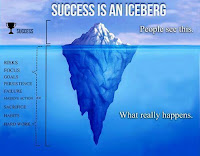Ribble (2015) offers educators, parents and adults a blueprint for how to educate our youth. The focus in K-8 on the nine elements can make for a very digestible diet of digital citizenship tailored to the needs of today’s digital world. The biggest challenge for me was to visualize how I could, in my language classroom, implement teachable moments for all 9 elements. Specifically, digital commerce may seem like a stretch. However, as I reflected on all our readings and videos I began to find easy ways to start implementing teachable moments for most elements. Recently I rolled out a Travel project for my HS Spanish students. They had to plan a vacation to a US city with a rich Latin flavor. They were given a budget and had to account for all expenses. What a great opportunity this was to talk about digital commerce and how to make smart decisions when thinking about making an online purchase. We discussed how to determine if a site is reputable and secure.
The other area where I saw students needed the most direction is in security. Often times kids stay logged into Google or on public computers without realizing the dangers. I did a demonstration for one class where I left my wallet on the table or my phone unlocked on a table. We all agreed that was a bad idea and then discussed how keeping your login information available to others by not properly signing out can leave you susceptible to hacks and identity theft. It may not seem like a big deal with you Google Drive, but when we think about our digital footprint, we are responsible to make sure we are always in control of it. If we leave our ID on a computer other can make poor choices that will appear to have been made by us. Thus, leaving us the victims of identity theft and fraud!
We live in a brave new world. The digital world is ubiquitous and in American culture is vital to success. We need to ensure we provide equity of access and knowledge on how to navigate safely in this world to ensure we are productive members who not only consume, but also contribute. The nine elements are our guide. They are principles that help us digest the world around us. We must learn to be critical thinkers and approach our digital society with a healthy fear and awareness to ensure that we are always safe and protected.
References:
Hinduja, S., & Patchin, J. W. (2015). Bullying beyond the schoolyard preventing and responding to cyberbullying. Thousand Oaks, CA: Corwin.
Ludwig, T., & Marble, A. (2018). My secret bully. New York: Alfred A. Knopf.
Ribble, M. (2015). Digital Citizenship in Schools: Nine Elements All Students Should Know (3rd ed.). Washington DC: International Society for Technology in Education.




































